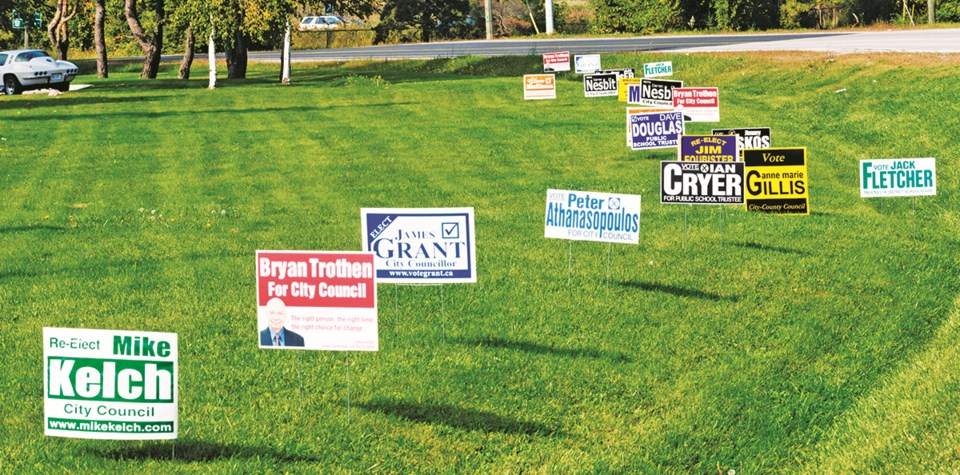Troy Shantz
If you’ve noticed fewer campaign signs around Sarnia this federal election, you’re not alone.
The parties say they’re planting fewer candidate signs for a variety of reasons, including cost, local bylaw changes and privacy concerns.
Plastic lawn sign send a negative message about stewardship, said Ted Hext, with NDP candidate Adam Kilner’s campaign.
“Environmentally, for instance, campaign signs check almost all of the dots on environmentally unfriendly products,” he said.
The NDP and Liberals ordered fewer signs this election.
At $5 to $20 per sign, they’re trying to manage their resources efficiently, they said.
Eileen Viola, campaign manager for Liberal Carmen Lemieux, said a focus on social media advertising is another factor, as is vandalism.
“Politics has become more polarized,” she said. “I think people value their privacy too. They don’t want people to know how they vote.”
Marilyn Gladu’s Conservative campaign did not respond to the Journal’s request for comment. But a volunteer said most of their signs — which are larger — are destined for the county.
People’s Party candidate Brian Everaert did not respond.
The Green Party campaign said sign numbers for candidate Peter Smith are on par with the 2015 federal election.
Sarnia’s year-old campaign sign bylaw could be having an impact as well, some officials said. Under the bylaw, signs can’t exceed 0.5 square-metres and they can only be placed on private property, according to Sarnia’s website.
Signs in violation will be seized by city bylaw enforcement and held for 10 days, and staff will contact violating political campaigns only once.
Camlachie resident Bob Sutton, who works with the Samara Centre for Democracy, said some voters simply aren’t comfortable ‘outing’ themselves by declaring for a particular party.
Declining campaign volunteer numbers are another factor, he added, a symptom of the growing separation between those who vote and those voted in.
According to Samara’s annual report on Canada’s democracy, more than 90% of Canadians are not members of any political party, and 60% have never even thought about joining, Sutton said.
He estimates less than 1% of Sarnia-Lambton’s population is involved in all local party operations.
“So there’s a very, very small number of passionate volunteers working exhaustively in various ridings trying to make things happen.”
